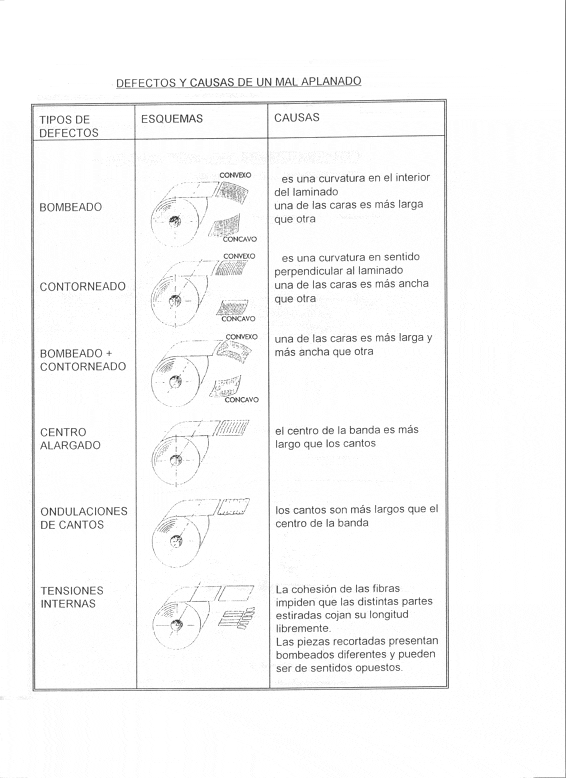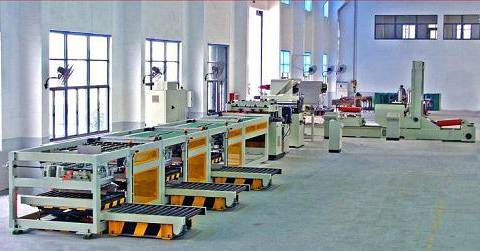Description and location of quality control points on a coil cutting line
INTRODUCTION
The lines of cut of coils are installations, that little by little have been doing habitual in the plants of manufacture of containers. Initially, there was a high price of equipment, which acted as a barrier to its implementation, but the obvious cost savings that its use brings, have promoted its use in an unstoppable way.
These savings are especially significant when it comes to cutting coils for the manufacture of round caps or bottoms. Companies that can not have an installation of this type, resort to third parties who perform this task.
The modern lines incorporate a series of quality control elements, so that in addition to cutting the reels in sheets, they perform a highly automated task of material control, allowing even a classification of the rejected sheets depending on the detected defect. However, there are a series of parameters that must be controlled, by means of sampling, by quality personnel using special equipment.
We have already discussed this subject on this Web page. We send our readers to work:
– Quality control in coil cutting lines
It details the specific control tasks that must be performed at each point. We will not repeat them as unnecessary. This new article tries to complement the aforementioned, defining the control points on the line, its content and the type of operation. In addition we will add an appendix on defects of flattening in a coil.
The cutting lines are usually operated by two people, one is responsible for the tasks at the head of the same, and the second in the queue, especially the completion of the packs of sheets. Part of the control tasks, which are not performed automatically, can be carried out by these two operators. In each case we will go into the detail.
CHECKPOINTS
1: Control of raw material
A.- Identification of the coil. It is the first task and it is a manual operation. It is done at the head of the line, and must be carried out by the operator who takes it from the warehouse, or failing that, the head operator. In Figure 1, which represents an installation of this type, each of the control points will be positioned, with a numbering that coincides with this hyphen
B – Aspect of the coil. Manual operation. Put the coil on the turntable platform and unpacked, the same line operator, visually examines it and gives its approval or repairs.
Figure No. 1: Control points on a coil cutting line.
2: Cutting length, coil width, squared and margin
Manual operation. Each time a change of measurements is made, it is necessary to verify the length, width and squareness of the resulting sheet. They are made on the control table. It is located in the vicinity of the command desk of the head operator. It must be this person who performs these checks. In the case of zigzag cutting for funds, at this point the margin or passage of the battlements is also controlled. See position 2 of the drawing.
3: Visual aspect of the band
Personal task At the head of the line, before the cutting operation, mirrors are positioned, allowing to visualize both sides of the band, and check their status. It is a specific task performed by the head operator during the running of the line. It decides instantaneously the destination – stacker – end of the defective sections, depending on the defect appreciated.
4: Thickness
It is an automatic and continuous control of the line, although it only takes place at one point along the entire route of the band. Watch the thickness of it. Once adjusted the tolerance in more and less desired for this value, the line operates alone, deriving the sheets out of specifications in the thickness.
5 : Holes
Automatic and continuous operation of the equipment, which is carried out on the entire surface of the band. Check the presence of perforations on its surface. If any are detected, that section of coil is diverted to a defective foil stacker previously programmed.
6 : Profile, arc and arrow of cut of the leaf
A – Profile and arc : Manual operation, which checks the curvature of the sheet in its two dimensions. Depending on its results, it may result in adjustments on the line roller train. This check must be done previously to No. 2. It is therefore linked to the operator of the line head, and next to the control table.
B – Cutting arrow . Check the ripples of the edge or reference edge of the coil. Manually check on the control table simultaneously to point 2.
7: Sampling
To be able to carry out laboratory tests (tempering, thickness, tinning …), which are necessarily carried out offline, it is required to take a series of samples taken from some leaves already cut. It is a manual task that the end-of-line operator can do. The necessary means to prepare the samples should be placed at the end of the installation, which is where leaves are more easily available. The right equipment is a small press, with a simple cutting tool, which punches convenient samples.
8 : Thickness, angle of elasticity and temper
All these manual operations are carried out offline and from the samples taken in point 7. They can be done in the laboratory, although if you want to give agility to the check, very convenient in case you need to stop the cutting operation and block the coil, it is appropriate to perform them in the vicinity of the installation, in a space conveniently prepared to be able to receive a durometer, micrometers and gauge to check the angle of elasticity. These equipment must be preserved from dust, noise and vibrations, so they will be located in a booth or enclosure.
It is also possible to optimize the workforce, adequately training the operator of the line queue, to perform these checks. For this, the packet packing operation must be automated enough, so that this person is left with free time, and so he / she can do this task.
CONTROLS
As a summary of what has already been commented simultaneously to the control points, we reflect in the following table, the parameters to be developed in each control point, and the type of operation necessary for this control.
The operation can be extended to 100% of the material, if it is carried out automatically by the equipment, or by statistical sampling, when it is carried out manually by one of the operators of the installation.
Coil cutting line control panel
DEFECTS AND CAUSES OF A FLAMMED EVIL
As an annex to this work, we include a summary table of the most typical defects, which can be derived from poor rolling of the coil. In general terms, they can be compensated with suitable adjustments, by means of the flattening equipment of the line, consisting of a roller train.















0 Comments